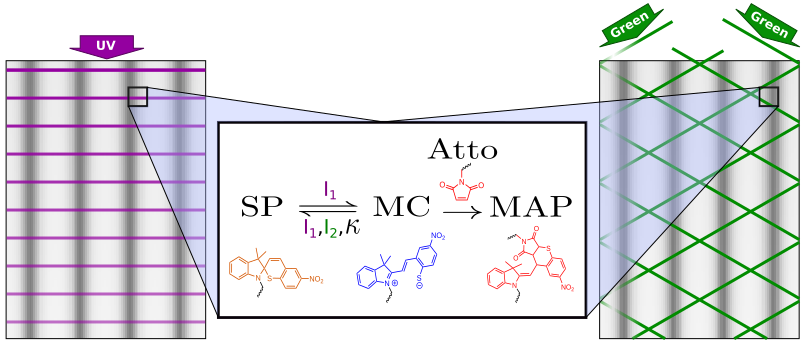Coupled EM - kinetics lithography simulation published in J. Phys. Chem. B

A. Habib, H. Vijayamohanan, C. K. Ullal and R. Sundararaman, “Coupled Electromagnetic and Reaction Kinetics Simulation of Super-Resolution Interference Lithography”, J. Phys. Chem. B 124, 7717 (2020)
Nanopatterning techniques capable of writing super-resolved patterns in 3 dimensions are highly sought after for emergent nanotechnologies. Two-color interference lithography using photo-activation and inhibition in materials has successfully demonstrated the fabrication of periodic patterns with feature sizes down to few nanometers in monolayers and thin films. For bulk nanopatterning, the extension of this technique to the third dimension has been particularly challenging due to increased optimization parameters involved with the light and photoresist interactions. To simplify the complexities involved in 3D, first a comprehensive study of the optical dynamics including absorption, diffraction, and intensity modulations coupled with the photo-activated and inhibited reaction kinetics in 2 dimensions is required. To this end, we have developed a coupled electromagnetic and reaction kinetics simulation method that can quantitatively predict these interactions for a periodic pattern of lines.
Our results show that diffraction effects are negligible (< 0.1%) for film depths up to 10 um. Simplifying experimental configuration from using two standing waves for both colors to a plane and a standing wave combination, we can achieve line contrast as good as 80% at optimal exposure times. We also explore pattern periodicity reduction beyond the inhibition light’s standing wave periodicity and find that sub-wavelength periodic lines with equal widths are possible by multiple exposure schemes. Our EM solver based on perturbation theory provides a computationally efficient method to be coupled to kinetic reactions of any future two-color photoresist candidate, thus providing a material-free quantitative approach for the study of optimal parameters for the two-color super-resolution interference lithography.
